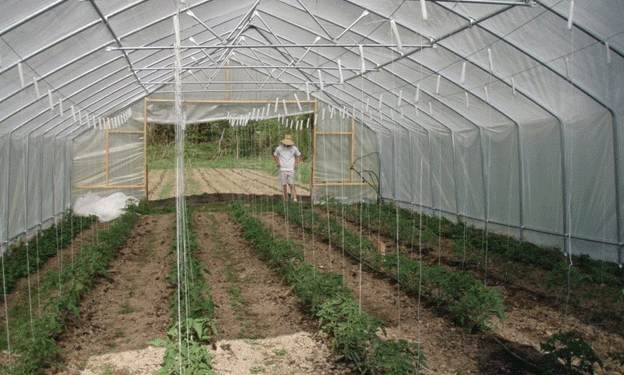Greenhouses are essential structures for many farmers and gardeners, providing a controlled environment for cultivating crops like tomatoes, cucumbers, peppers, and eggplants. However, these enclosed spaces also offer ideal conditions for various plant pathogens and pests. By the end of the growing season, diseases such as late blight and infestations like spider mites are often present, threatening future yields. Thoroughly treating your greenhouse in November can significantly reduce these problems, ensuring a healthier crop the following year.
November: The Perfect Time for Greenhouse Treatment
According to agronomist Victoria Radzevskaya, November marks the ideal time to treat your greenhouse as crops are already harvested, and the structure is ready for deep cleaning and disinfection. Conducting this treatment before the coldest months helps eliminate disease spores, insects, and mites that would otherwise overwinter and multiply come spring.
Key Threats: Late Blight and Spider Mites
Late blight, caused by Phytophthora infestans, is a notorious pathogen, especially for tomatoes and potatoes. It spreads rapidly in moist conditions, devastating foliage and fruit. Spider mites, on the other hand, are tiny but highly destructive pests that thrive in dry, warm environments, damaging crops by feeding on plant sap. Both threats can linger in greenhouse structures, posing risks year after year.
Effective Treatment: Tobacco Smoke Bomb
One effective method for greenhouse disinfection recommended by Radzevskaya is using a tobacco smoke bomb. This method is known to combat a wide range of pests and diseases:
- Targets: Tobacco smoke kills thrips, spider mites, aphids, and powdery mildew spores. It also deters rodents from taking up winter residence.
- Ease of Use: The treatment is simple and does not damage greenhouse materials. To apply, ignite the tobacco smoke bomb according to the manufacturer’s instructions. Once the cardboard casing has burned, the bomb will continue to smolder, emitting smoke. Leave the smoke bomb on the greenhouse floor for about three hours, ensuring the space remains sealed to maximize effectiveness.
This approach has been shown to reduce pest and disease pressure significantly, setting the stage for healthier crops in the next growing season. Additionally, the smoke treatment does not leave harmful residues, making it a safe and effective solution for both small-scale farmers and commercial operations.
Other November Greenhouse Preparation Tips
- Remove Plant Debris: Clear out any remaining plant material to eliminate hiding spots for pests and to reduce organic matter that could harbor pathogens.
- Wash Greenhouse Surfaces: Use warm, soapy water to clean walls, benches, and tools. This physical removal of contaminants complements the tobacco smoke treatment.
- Inspect for Structural Damage: Check for cracks or holes in the greenhouse structure and repair them to maintain an effective barrier against pests and cold weather.
Implementing a comprehensive greenhouse treatment plan in November, particularly using methods like a tobacco smoke bomb, can make a significant difference in managing pests and diseases. By taking these preventative measures, farmers and gardeners can ensure that their crops have the best possible start in the spring, leading to healthier growth and higher yields. With a well-maintained greenhouse, the potential for pest and disease outbreaks is minimized, setting up a more successful growing season.










